


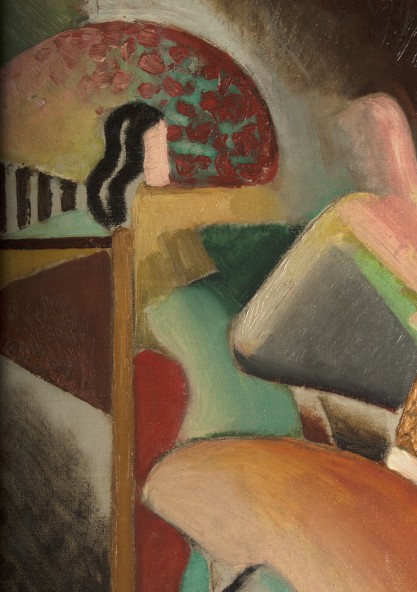
A dizzying, kinetic, brilliant large-scale fine art oil painting by the American artist and illustrator Theodore Haupt, signed in the lower right corner and dated 1929. This important surviving painting was created in Haupt’s signature modernist style combining elements of Cubism and Surrealism. Lyrical figures of swirling burlesque dancers depicted in lush harmony are juxtaposed with heavy stippled impasto areas creating a moody exciting canvas field.
Haupt illustrated forty-four covers for The New Yorker between 1927 and 1933, two of those are also for sale at our gallery. When this painting was created the artist was starting to exhibit in New York City and at other American museums and galleries. The painting retains the original stepped gold painted wood frame and has benefited from conservation, including a few small patches on the back canvas that have invisibly repaired old tears.
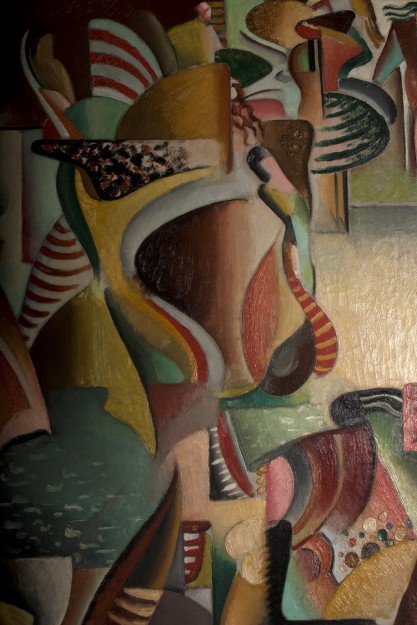




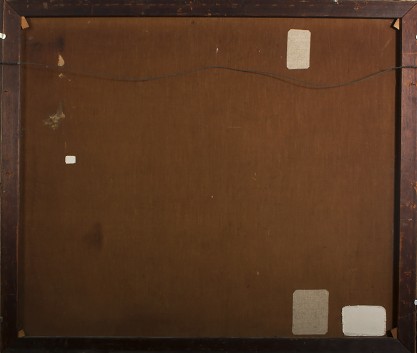
A bio on Theodore Haupt – courtesy of Wikipedia :
Theodore Haupt was the youngest of three children born to an Episcopalian Minister, Reverend Charles Edgar Haupt and Alexandria Dougon, in St. Paul Minnesota on October 11, 1902. Reverend Haupt’s father was General Herman Haupt who supervised the railroads, built bridges for the Union Army during the Civil War and became an outspoken voice in President Lincoln’s White House during that troubled time.
Haupt’s early gifts for drawing and painting were noted but not encouraged by his family. Nonetheless, he persevered and was further inspired when, at age twenty-one, his paintings received highly favorable reviews in a large exhibition mounted by The Beard Gallery in Minneapolis. Haupt attended the Minneapolis School of Art, studying with Anthony Angarola, recipient of a Guggenheim Fellowship and an acclaimed Chicago modernist. A critical turning point came for Haupt in 1923, when he won a scholarship to the Académie Julian in Paris. Haupt remained in Europe for two years, studying with the sculptor and painter, André L’Hote in Paris, Vienna and Gratz.
In 1927 Haupt moved to New York, renting an apartment on East 10th Street in Manhattan. For five years Haupt supported his studio art with graphic design assignments for The New Yorker, Charm and Vanity Fair magazines; his debut cover for The New Yorker being produced almost immediately in September of that first year. Between 1927 and 1933, Haupt turned out a staggering forty-five covers for The New Yorker presenting a gamut of subjects from, New York City skylines at night, to window dressers creating Christmas displays, all done in an Art Deco narrative style. The October 9, 1929 cover painting of Park Avenue is now in the collection of the Museum of Modern Art. Conde nast maintains a large number of the artist’s forty-five original magazine covers in its permanent collection.
During the 1930s, Haupt’s modernist paintings were being exhibited in New York art galleries and at museums around the country. Two of his paintings were selected for The Art Institute of Chicago’s 45th Annual Exhibition (October 24-December 8, 1935). Haupt’s works were shown at a number of museums, among them The Pennsylvania Academy of Fine Art; The Minneapolis Institute of Art; and The Whitney Museum of American Art, New York.
Haupt continued turning out paintings and executing art for public spaces including work for the Whitney Museum and a mural for the Central Park Zoo, which was destroyed in a restoration of the zoo. Along with many other artists during the depression, Haupt was active in the period’s government sponsored WPA Art Programs, an experience that encouraged an open-minded and experimental attitude in his art practice for the remainder of his life.
In 1942, Haupt married a school teacher, Miriam Diehl. Her steady employment sustained the couple financially. Haupt and his wife purchased a house in Peekskill, New York in 1941 and in 1948 moved to San Miguel de Allende, an artist’s community in Mexico. Haupt became increasingly engrossed in that country’s cultural contrasts, an interest that expressed itself in paintings and sculptures of this period. While in Mexico the couple built a house and adopted two children, Gloria and Maricella. After Miriam’s unfortunate early death, her pension continued to sustain the artist as the demand for illustration lessened.
Now in a financial position to walk away from the machinations of the art market, Haupt embarked upon an extended period of renewed investigation and experimentation, working his way through abstract, color-drenched, non-representational painting styles and developing a series of Surrealist-inspired canvases. Haupt later investigated chromatic vibrations and dynamic optical effects in a series of compelling Op Art canvases. His career began as a realistic portrait painter and he often returned to that subject matter, reinterpreting the process each time in light of his stylistic investigations.
When his wife died in the 1960s, the artist moved to Hawaii with his children, later resettling in New York in the Westbeth Artist’s Community in Greenwich Village. Returning briefly to Hawaii in 1968, he connected with a lifelong supporter, Dan Wall, at the University of Hawaii. Theodore Haupt died at the age of 87, in Indianapolis, June 13, 1990.
Below are a few examples of Haupt’s New Yorker covers from the Art Deco period :
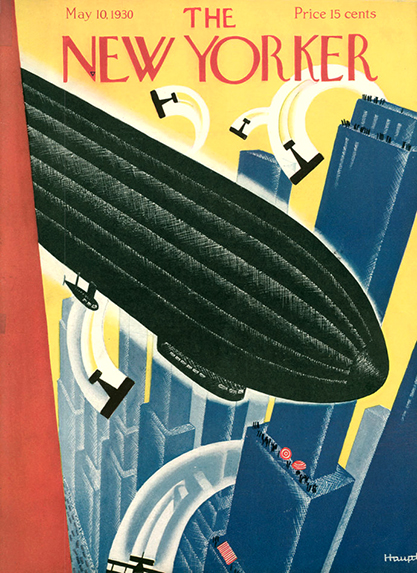

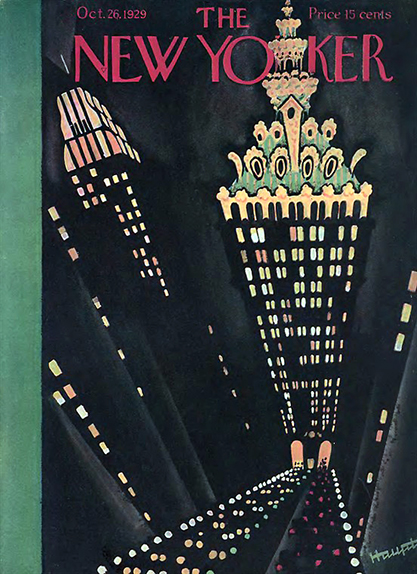

Theodore Haupt’s works are in the permanent collections of:
The Museum of the City of New York;
The Museum of Modern Art;
New York University;
The University of Pennsylvania;
The University of Massachusetts.

